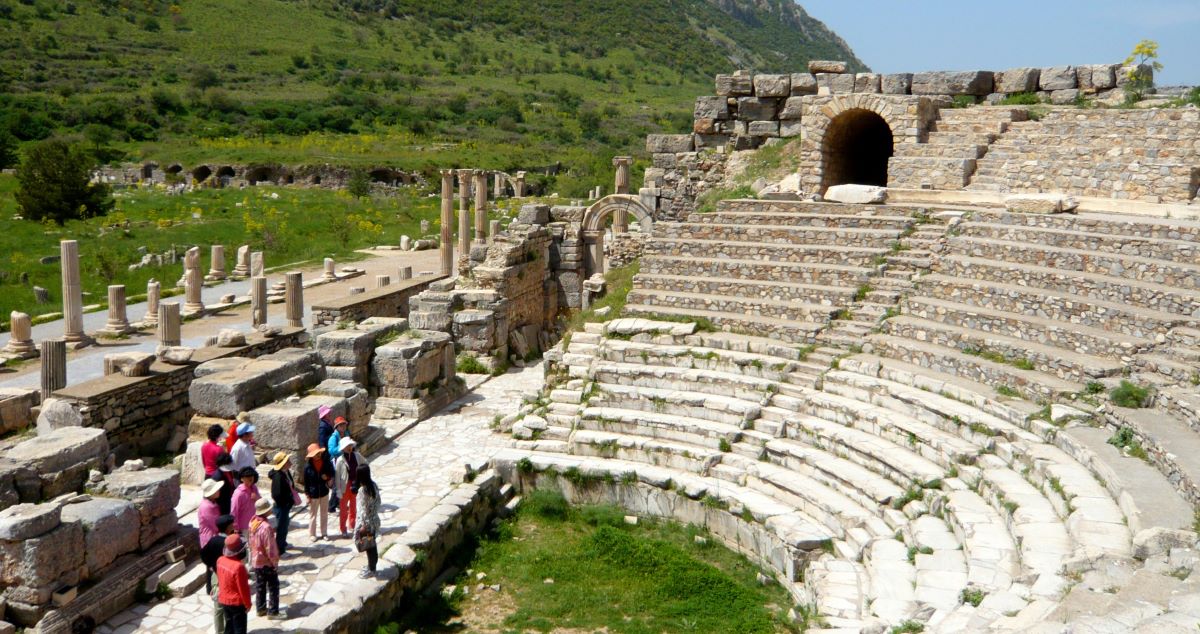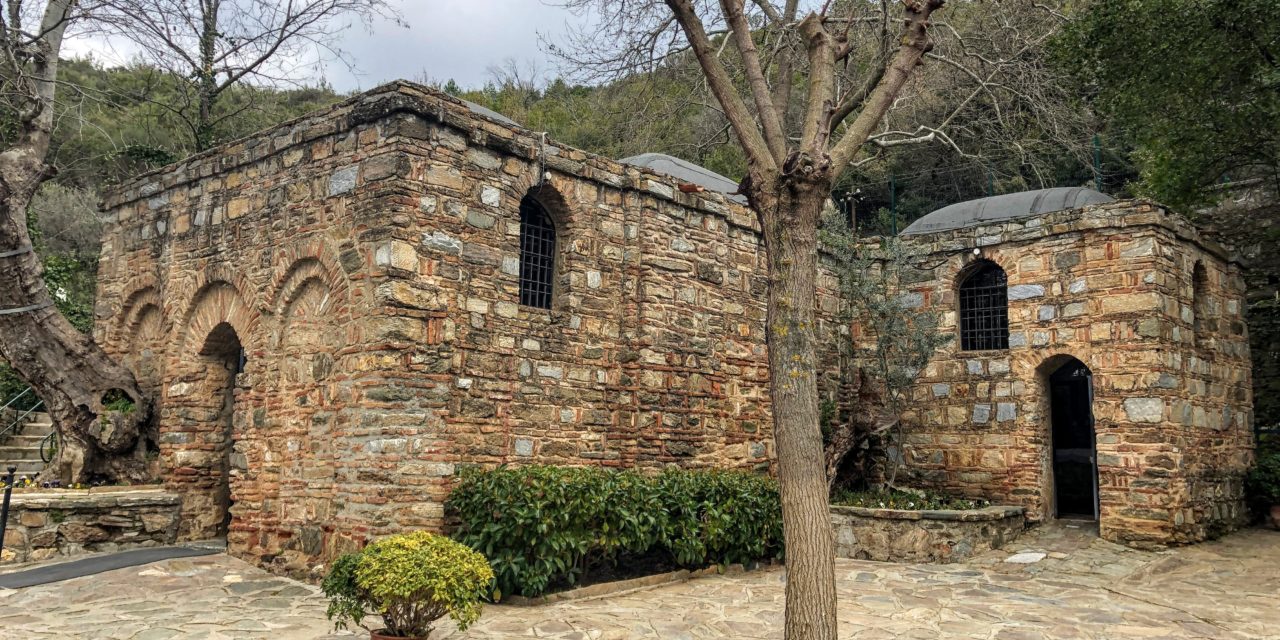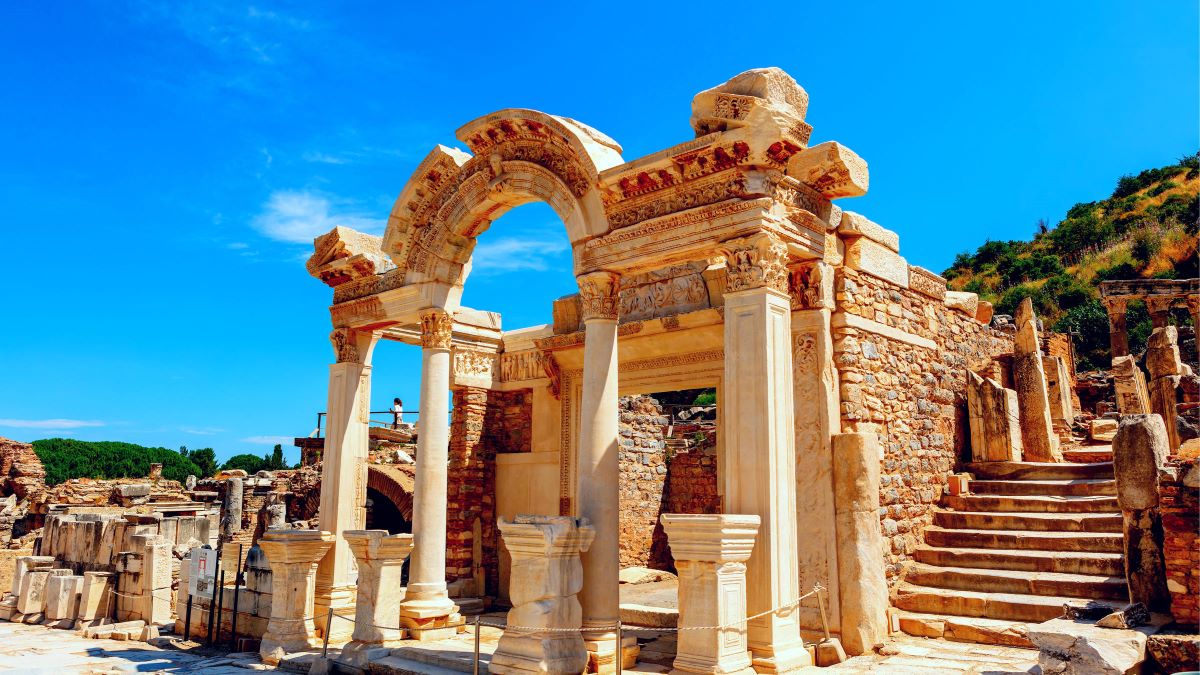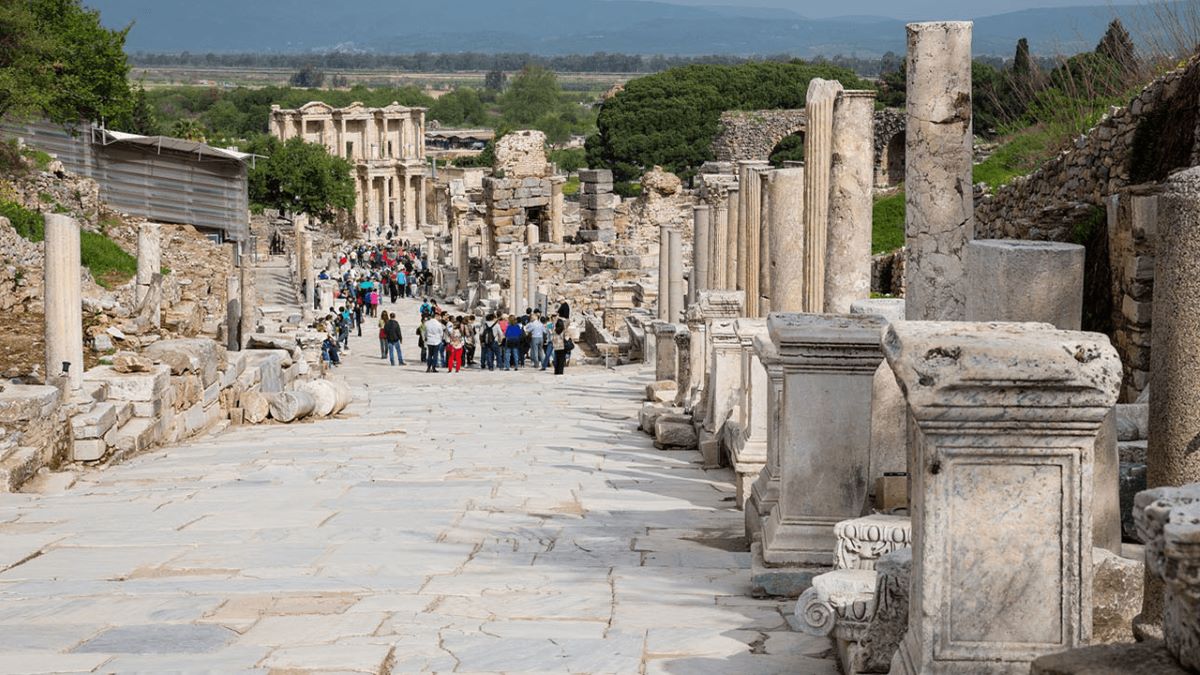The Virgin Mary's house is believed by some Christians to be the place where Mary…

Unveiling the Roman and Hellenistic Ephesus: A Journey into the Food, Fashion, and Entertainment of the Ancient City
Ephesus was a bustling city during the Roman and Hellenistic periods, known for its rich history and vibrant culture. Delving into the daily life of Ephesus reveals fascinating insights into the food, fashion, and entertainment of this ancient city. Let’s take a journey back in time to discover the intriguing aspects of life in Roman and Hellenistic Ephesus.
Food in Ephesus:
Food was a significant part of daily life in Ephesus. The people of Ephesus had a diverse diet, with access to various food sources. Agriculture played a crucial role in providing food, with wheat, barley, olives, and grapes being staple crops. The fertile plains around Ephesus were also known for producing high-quality fruits and vegetables.
Fishing was another important source of food in Ephesus. As a coastal city, Ephesus had access to the Aegean Sea, and fish and seafood were popular food choices. Trade also played a significant role in the availability of food in Ephesus, with imported goods from different regions of the Roman Empire, such as spices, wine, and exotic fruits.
Culinary culture was also prominent in Ephesus. The people of Ephesus used a variety of ingredients, herbs, and spices in their cooking, creating unique flavors. Cooking techniques such as roasting, boiling, and baking were commonly used. Popular dishes in Ephesus included soups, stews, and fish-based dishes.
Food also had social significance in Ephesus. Dining habits were an essential part of social gatherings, with communal meals being a common practice. Food was often used to display social status and hospitality, with lavish feasts being held for special occasions and events.
Fashion in Ephesus:
Fashion was an important aspect of daily life in Ephesus, reflecting the cultural influences of the Roman and Hellenistic periods. Clothing, accessories, and hairstyles were significant components of fashion in Ephesus.
The people of Ephesus were influenced by both Greek and Roman fashion. Roman clothing styles, such as the toga and tunic, were commonly worn by the upper class, while Greek clothing styles, such as the chiton and himation, were popular among the general population.
Materials, colors, and styles were important in Ephesian fashion. Clothing was made of various fabrics, including linen, wool, and silk, depending on one’s social status and wealth. Bright colors were popular, and clothing often featured intricate patterns and designs. Jewelry, including earrings, necklaces, and bracelets, was also popular in Ephesus, often made of gold and precious stones.
Fashion also had social significance in Ephesus. Clothing and accessories were used to denote social status, with the wealthy and elite often wearing more elaborate and expensive attire. Gender roles were reflected in fashion, with men and women wearing different styles of clothing and accessories. Fashion also served as a cultural identity marker, distinguishing Ephesus from other regions of the Roman Empire.
Entertainment in Ephesus:
Entertainment was a significant part of daily life in Ephesus, offering a range of activities for its residents. Theater, sports, and games were popular forms of entertainment in Roman and Hellenistic Ephesus.
Theater was an essential aspect of Ephesian culture, with the Great Theatre of Ephesus being one of the largest and most renowned theaters in the ancient world. The theater was not only a place for performances but also a venue for civic and religious expressions, including plays, music, and festivals.
Sports and games were also popular forms of entertainment in Ephesus. The people of Ephesus participated in various athletic activities, including chariot races, foot races, and combat sports like wrestling and boxing. The Ephesian Gymnasium was a hub of athletic activities, where people would gather to train and compete in different sports.
In addition to theater and sports, games were also popular in Ephesus. Board games, dice games, and other indoor games were commonly played by both the wealthy and the general population for leisure and entertainment. Gambling was also prevalent, with dice games being especially popular among the lower classes.
Music and dance were also important forms of entertainment in Ephesus. Musical performances, including concerts and recitals, were popular in theaters and other public venues. Dance was also an integral part of Ephesian culture, with various dance forms performed during festivals, celebrations, and religious ceremonies.
The daily life of Roman and Hellenistic Ephesus was vibrant and diverse, with food, fashion, and entertainment playing essential roles in the city’s culture and society. Ephesus was a melting pot of different cultural influences, blending Greek and Roman traditions to create a unique identity. From the diverse culinary culture to the intricate fashion styles and the rich tradition of theater, sports, and games, Ephesus was a city that thrived on its rich cultural heritage. Exploring the daily life of Ephesus provides us with valuable insights into the ancient city’s fascinating history, offering a glimpse into the everyday lives of its inhabitants and the unique aspects of their food, fashion, and entertainment.




This Post Has 0 Comments